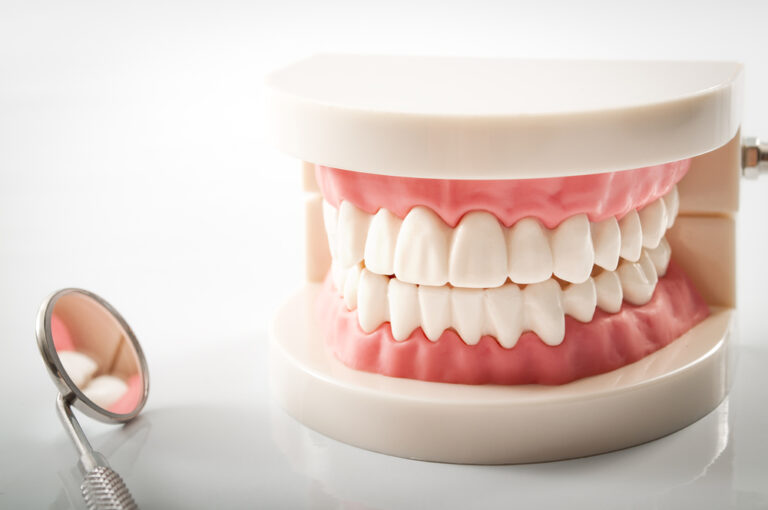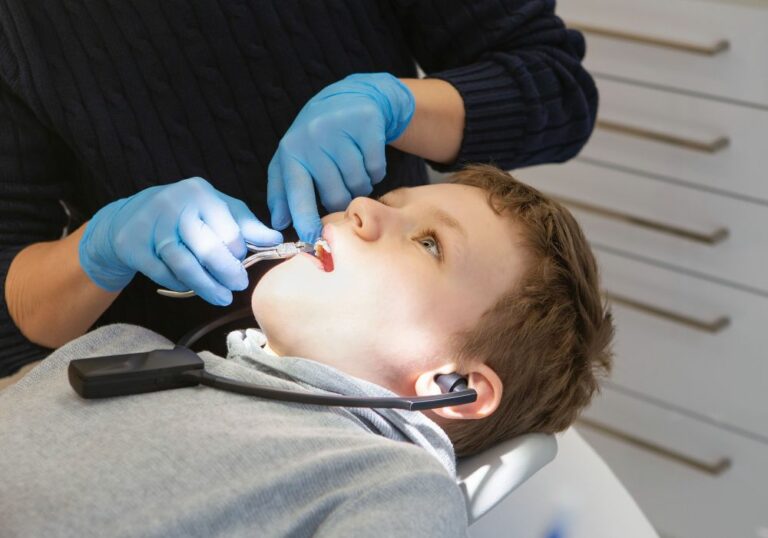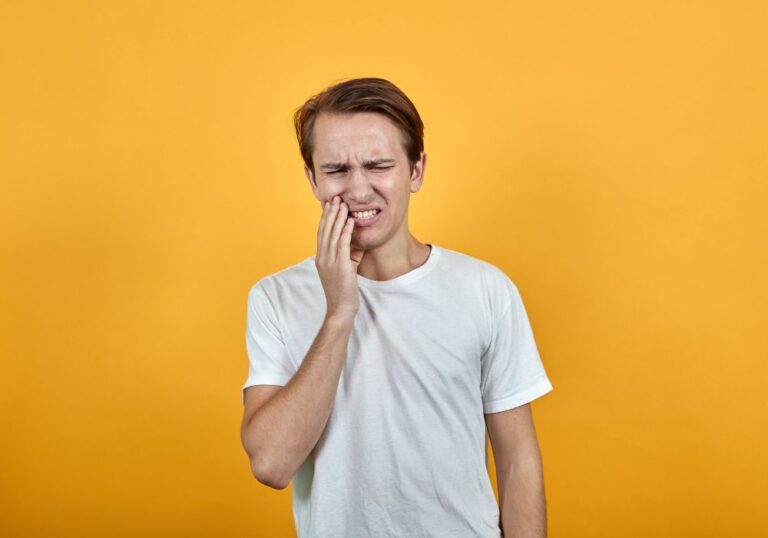Having teeth that appear slanted or tilted after undergoing orthodontic treatment can be frustrating and concerning. This article explores the potential causes, diagnosis, treatment options, and oral health implications of teeth becoming slanted after braces. It also provides tips on preventing recurrence.
What causes teeth to become slanted after braces are removed?
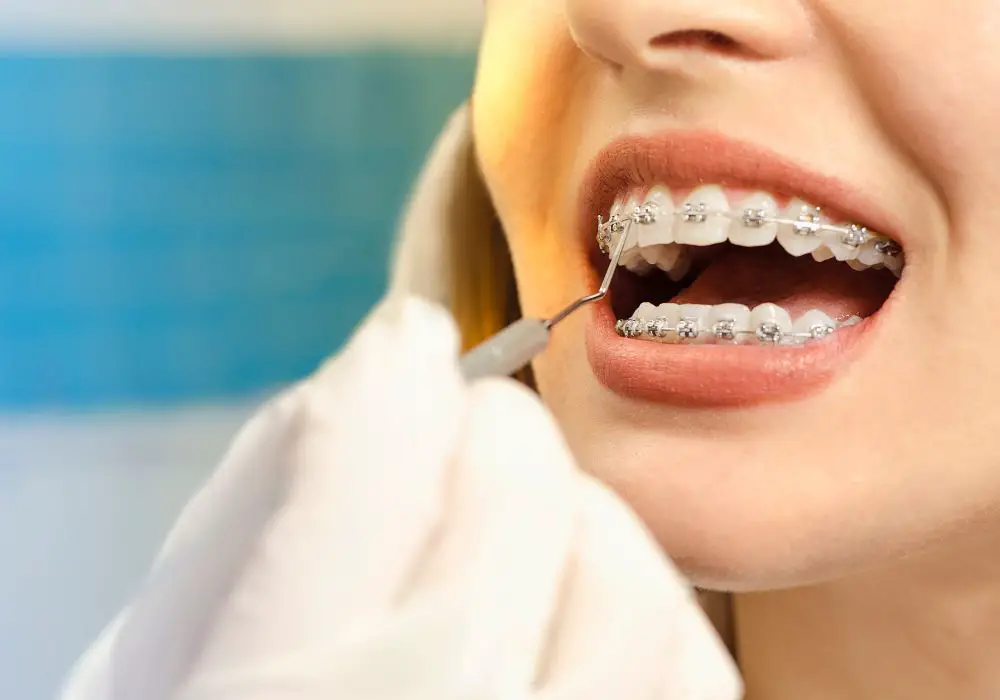
There are several possible reasons teeth may take on a slanted or tilted appearance post-braces:
The roots beneath the gums become angled
During orthodontic movement of the teeth, the constant controlled force applied by braces can cause the root structures within the bone to bend or flex over time. As the roots become gradually tilted, this is reflected in the angle of the clinical crown visible in the mouth, even when the crowns appear straight. Panoramic x-rays are needed to evaluate the position of the tooth roots.
Dental relapse after braces
One of the most common causes of slanted teeth following orthodontic treatment is relapse, or the teeth shifting back towards their original crooked positions prior to braces. This occurs due to the periodontal ligaments around the teeth retaining a subtle “memory” of the old tooth position. The elastic nature of the ligaments allows for remodeling, but creates a slight constant tugging force that causes progressive minor tooth movement back towards the previous misaligned state.
This tendency for relapse is particularly strong in lower front teeth, as the forces of the tongue pressing against them encourages teeth to drift and crowd. Relapse can occur rapidly if retainers are not worn regularly as directed. However, in some cases, gradual subtle relapse is seen many years after braces as the ligament forces persist long-term.
Premature loss of orthodontic retention
Most orthodontists recommend a period of retention using removable retainers or fixed bonded wires behind the teeth for at least 1-2 years following braces. This holds the teeth in their new corrected positions while the periodontal ligaments biologically “re-set” to the new tooth angles. Loss of this retention through inconsistency in wearing removable retainers or breakage of fixed retainers allows relapse. The longer retention is lost, the more dramatic the movement as the teeth are no longer stabilized.
Jaw developmental pattern changes
If braces are applied during adolescence while the jaws are still growing and maturing, subtle shifts in the jaw growth pattern can influence tooth position. For example, if more vertical than horizontal growth occurs, anterior teeth may flare out and appear slanted. Rotational growth changes can also indirectly impact tooth inclination.
Development of occlusal interferences after braces
In some cases, issues with the “bite” or contact between upper and lower teeth can arise after braces are removed, even if alignment appears good initially. This is known as developing a “malocclusion”. For example, uneven over-eruption of a tooth may create an inclined plane, putting pressure on an opposing tooth, causing it to twist or tilt in response. Such occlusal interferences can torque teeth out of position over time.
Undetected partial bracket/band detachment
If a bracket or band loosens partially during treatment, alignment may be compromised only in that specific tooth. This can lead to localized slanting not immediately detected if the looseness is subtle.extend this…
Unresolved class II or class III malocclusion
In some instances, an underlying class II or III malocclusion characterized by excessive overjet or underjet of the upper front teeth relative to the lower may not be fully corrected by braces or aligners. This can result in anterior teeth appearing slanted forwards or backwards relative to the occlusion.
How are slanted teeth after braces diagnosed?
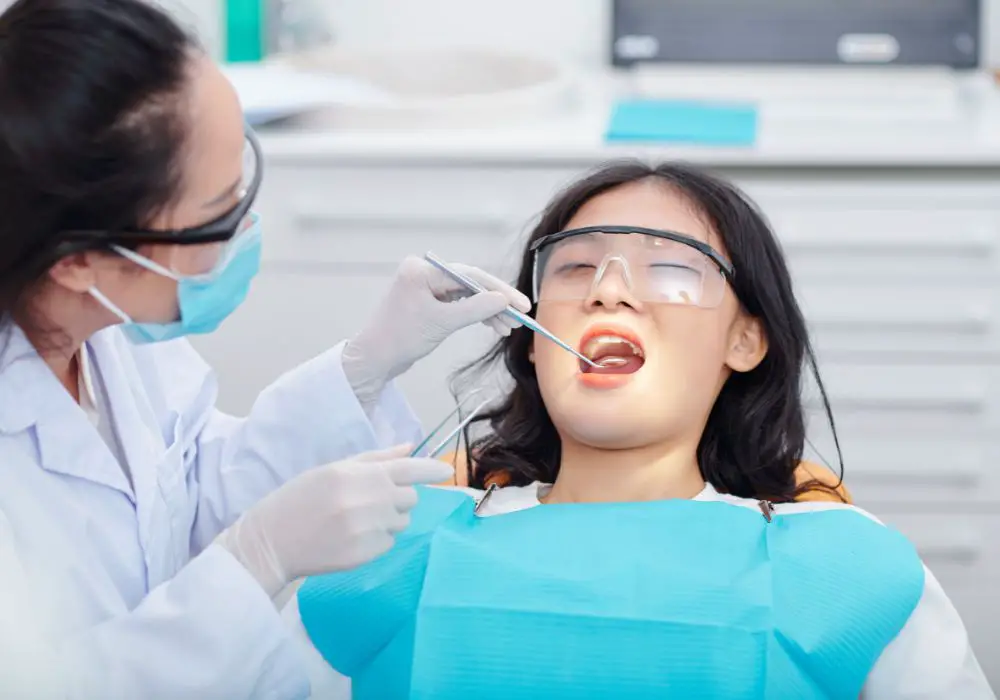
If your teeth begin to appear noticeably slanted or tilted after completing orthodontic treatment, even if retention is still being worn, make an appointment to see your orthodontist for a thorough evaluation.
The orthodontist will perform a clinical examination of the visible crowns of the teeth from all angles, assessing for signs of uneven alignment or slanting. This may be done visually, but also by taking molds or digital scans of the teeth to analyze from 3D perspectives.
In addition, the following diagnostic steps should be taken:
- New panoramic radiographs will be taken to determine if tooth root tilting underlies the clinical crown slanting.
- Intraoral photographs will be retaken and compared to pretreatment images to objectively evaluate if relapse has occurred.
- Any occlusal interferences causing localized tooth tilting will be identified through bite assessment.
- Retention status will be examined – this includes retainer fit, wear schedule, compliance and any breakage.
- Any issues noted during active treatment will be reviewed, such as loose bands or poor bracket bonding.
By correlating clinical presentation with radiographic findings, photographic evidence and retention history, the precise etiology of post-braces tooth slanting can be determined.
What are the treatment options for slanted teeth after braces?
If evaluation confirms that tooth slanting has recurred after orthodontic treatment, the orthodontist will suggest further corrective treatments. Options may include:
Re-treatment with braces
If significant relapse is detected soon after debonding while growth is still ongoing, the orthodontist may recommend placement of braces again to move the slanted teeth back into proper alignment. Braces can completely correct tilted teeth, but treatment time is typically shorter than the initial course, usually ranging from 6 months up to 1 year in duration.
Clear aligner therapy
Clear aligner systems like Invisalign are also capable of re-aligning mildly slanted teeth due to relapse. As opposed to fixed braces, aligners use a series of removable plastic trays that incrementally shift teeth position. Results are limited in cases of extreme relapse or root angulation issues. Aligner re-treatment averages 9-12 months.
Permanent bonded retainers
Long-term fixed retainers cemented to the tongue-side of the front teeth may be recommended as part of relapse treatment. Unlike removable retainers which depend on patient compliance, fixed retainers provide 24/7 stabilization to prevent any further drifting or tilting of the teeth.
Dental restorations
For adults with longstanding slanted tooth issues or root complications unable to be fully corrected through orthodontics, cosmetic restorative options like dental veneers, crowns or bonding may mask the positional issues and dramatically improve smile appearance. However, restorations do not change the actual underlying tooth positions.
Periodontal crown lengthening
In some cases, a periodontal procedure called crown lengthening can be performed to expose more of the tooth root structure, which can help balance out a severely tilted tooth’s proportions. It does not alter the root position but can camouflage it better. This is usually done in combination with restorations.
Surgical orthodontics
If non-surgical re-treatment proves ineffective for severely slanted teeth, surgical orthodontics may be considered. This may involve surgical exposure of impacted teeth or osteotomies where sections of bone are cut and repositioned along with the teeth. This comprehensive approach is more invasive but can align even severely compromised teeth.
Tooth extraction
In the most severe cases where a tooth is so extremely slanted that it cannot be moved without injuring the root, extracting it and closing the gap orthodontically may be recommended. This is typically a last resort for hopelessly slanted teeth causing oral health issues.
Can slanted teeth after braces lead to oral health problems?
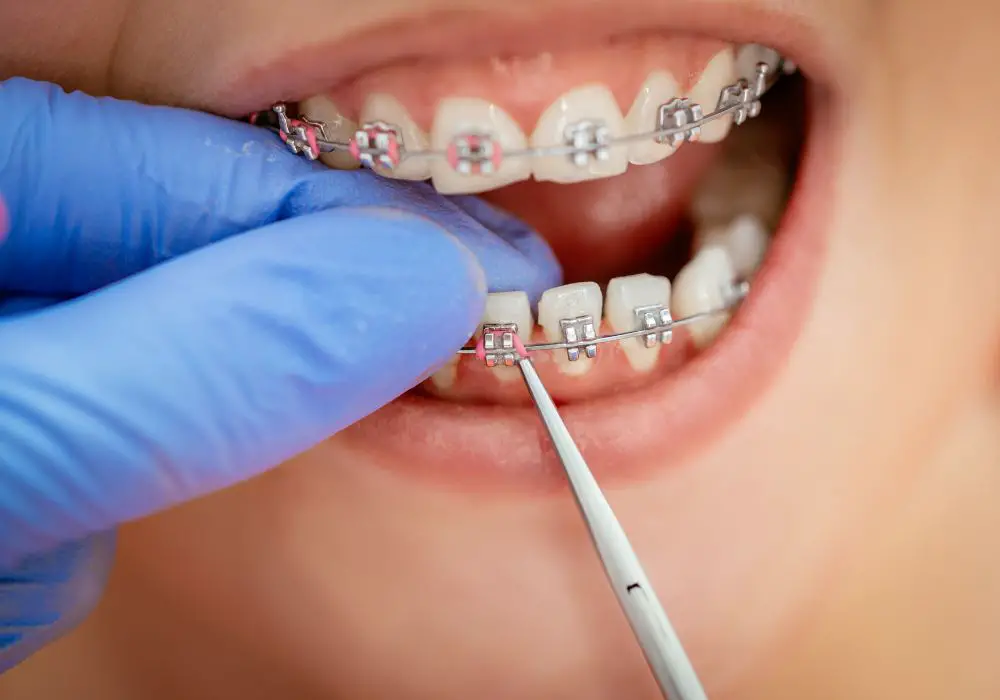
Mild cases of tooth slanting following orthodontics may not necessarily cause any significant issues. However, several oral health problems could arise if severely tilted teeth are left untreated:
Problems with occlusion and chewing
When teeth become significantly slanted, it can alter the contacts between upper and lower teeth, disrupting the bite relationship which can make chewing less efficient. Misaligned teeth can also increase the risk of tooth wear facets, chipping or fracture from abnormal pressures.
Increased plaque retention and periodontal disease
Severely rotated or tilted teeth are harder to clean due to irregular alignment. Areas near the gums may be difficult to access with a brush and floss, increasing plaque accumulation and risk for inflammation of the gums. Periodontal disease may progress faster around malposed teeth.
Increased risk of cavities
The plaque retention on slanted teeth also raises the odds of developing decay. Without diligent hygiene, cavities can rapidly form in hard to clean areas and compromise the tilted teeth.
Development of TMD/jaw joint issues
Changes to occlusion from slanted teeth may overload the TMJ (temporomandibular joint) leading to jaw tension, pain, clicking or popping noises with chewing. Headaches or ear pain can also develop over time.
Speech impairment
In cases where the front teeth are severely tilted, this can impede the tongue, resulting in tongue thrusting habits. Speech may become unclear, or a lisp could develop. Maintaining corrected tooth alignment is vital for proper enunciation.
Impacted adjacent teeth
In some situations, a severely slanted tooth can directly block or crowd adjacent teeth, pushing them out of the arch alignment. This increases the risk of entrapment or impaction of teeth within the bone which can require extraction.
Thus while mildly tilted teeth are not a major concern, severely rotated or slanted teeth often benefit from re-treatment to prevent oral health complications. Regular dental appointments are key to monitoring for negative changes.
Tips to prevent recurrence of slanted teeth after orthodontic treatment
Consistent long-term retention is paramount for maintaining corrected tooth alignment and preventing slanting or tilting relapse after braces or Invisalign:
- Wear retainers exactly as prescribed. Removable retainer wear must be nightly or as directed for 1-2+ years. Never go more than 2-3 days without wearing retainers.
- Attend all scheduled retention check appointments. Any issues like poor fitting retainers can be caught early and addressed.
- Get prompt repair for loose brackets or broken wires during active treatment. Don’t wait weeks until your next adjustment.
- Consider fixed lingual retainers cemented behind front teeth for added stability after braces removal.
- Ask for teeth to be overcorrected slightly during braces treatment to account for relapse tendency.
- Avoid teeth grinding and clenching habits as this can torque teeth out of place over time.
- Maintain meticulous oral hygiene to prevent periodontal disease forces on teeth.
- Limit intake of hard, sticky foods that could dislodge orthodontic appliances and disrupt tooth position.
With diligent retention and preventive care, teeth can remain beautifully straight for the long term after orthodontic correction. Report any shifting or slanting to your orthodontist right away before major relapse occurs.
FAQ about slanted teeth after orthodontics
Why do my lower front teeth look crooked again after braces?
The lower front teeth often drift and crowd again after braces, even with retainer wear, due to constant pressure from the tongue muscles against them. This encourages the bottom teeth to tilt and rotate. Lifelong nightly lower retainer wear is key to counteract this.
Can missing too many retainers cause slanted teeth?
Absolutely. The more retainers are left out inconsistently, the more the teeth will drift back towards their previous positions. Eventually this can lead to noticeable slanting as some teeth shift more than others without retainer stabilization.
Should I consider a second opinion if my teeth are still slanted after braces?
A fresh perspective can be helpful – a different orthodontist may pick up on aspects of your unique malocclusion that require special management to prevent relapse. Second opinions are perfectly fine to get if issues persist despite your best efforts.
How many years after braces can teeth still relapse significantly?
Most major relapse tends to occur in the first 2 years after braces are removed if retention is inconsistent. However, minor to moderate relapse is still possible many years down the road, even 5-10 years post-treatment in some cases. Teeth and bones have long memories!
Can teeth relapse in adults even if I had braces as a teenager?
Yes, it is possible to experience orthodontic relapse as an adult if fixed retention was not maintained long-term after adolescent braces. Some cases don’t relapse until well into adulthood when periodontal ligament laxity increases and other dental issues arise.



